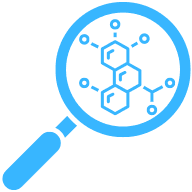Improving Patient Outcomes With Biostatistics: 7 Examples from Public Health Practice
Unlock the secrets to enhancing patient outcomes using biostatistics with real-world examples from the public health sector. This article distills complex data into actionable insights, drawing on the wisdom of seasoned experts. Discover how innovative analysis and targeted interventions are revolutionizing disease prevention and healthcare delivery.
- Analyzing Postural Strain Reduces Chronic Pain
- Automated Reminders Improve Appointment Adherence
- Early Disease Detection Prevents Outbreaks
- Assessing Health Programs Enhances Effectiveness
- Targeted Interventions Aid At-Risk Populations
- Strengthening Public Health Surveillance Systems
- Evaluating Policies Maximizes Public Health Benefits
Analyzing Postural Strain Reduces Chronic Pain
One of the most impactful ways I've used biostatistics to improve patient outcomes was in analyzing postural strain and its correlation with chronic pain in office workers. At The Alignment Studio, we conducted an internal study on our patients, tracking musculoskeletal complaints related to prolonged sitting and poor workstation ergonomics. Using a combination of patient-reported data, movement assessments, and injury recurrence rates, we identified key patterns, such as a significant link between lower back pain and poor lumbar support, as well as increased neck pain in individuals with dual screen setups positioned too high. By applying statistical analysis to this data, we developed a targeted intervention program that combined physical therapy with tailored ergonomic adjustments and workplace-specific exercises. Within three months, patients who followed the program reported a reduction in pain levels and an improvement in mobility, with fewer cases requiring ongoing treatment.
My 30 years of experience in musculoskeletal physical therapy and my background in evidence-based practice allowed me to interpret these findings effectively and translate them into real-world solutions. By leveraging biostatistical insights, we didn't just treat symptoms, we identified underlying workplace risk factors and implemented preventative strategies that significantly reduced injury recurrence. This work directly contributed to evidence-based practice by reinforcing the importance of integrating ergonomic education into physical therapy treatment plans. It also had a broader public health impact, as several corporate clients adopted these recommendations to improve employee well-being, reducing absenteeism and enhancing productivity. This experience reinforced my belief that data-driven approaches, combined with hands-on clinical expertise, are essential in optimizing patient care and long-term health outcomes.

Automated Reminders Improve Appointment Adherence
Biostatistics is crucial in improving patient outcomes by identifying patterns, predicting trends, and optimizing healthcare delivery. One example from my experience involves leveraging data analytics to enhance operational efficiency in rehabilitation clinics, ultimately leading to better patient care.
Through Noterro, a practice management solution, we analyzed appointment adherence rates and patient progress trends across multiple clinics. By tracking data on missed appointments, treatment plans, and recovery timelines, we identified that patients who received automated reminders were significantly more likely to attend follow-up sessions.
This insight led to the implementation of automated appointment reminders, reducing no-show rates and ensuring continuity of care. This data-driven approach aligns with the principles of evidence-based medicine, where clinical decisions are informed by real-world insights rather than intuition alone.
By integrating biostatistics into everyday practice management, we empower healthcare providers to deliver consistent, high-quality care while improving patient engagement and adherence to treatment plans.

Early Disease Detection Prevents Outbreaks
Early detection of diseases can significantly reduce the number of outbreaks. By analyzing data trends and patterns, biostatisticians can identify potential threats before they become widespread. This allows public health officials to implement preventive measures swiftly.
The early intervention decreases the burden on healthcare systems. It also ensures that communities remain safe and healthy. More funds should be allocated to early detection programs.
Assessing Health Programs Enhances Effectiveness
Enhancing the effectiveness of health programs is vital for better outcomes. Biostatistics plays a crucial role by assessing the data from various health initiatives. This helps to identify what works and what doesn’t.
With this information, health programs can be adjusted to be more efficient. High-impact interventions mean that resources are used in the best way possible. Stakeholders must prioritize improving these programs.
Targeted Interventions Aid At-Risk Populations
Targeted interventions are essential for assisting at-risk populations. Through biostatistics, it’s possible to identify which groups are most vulnerable. This allows for the creation of specific health strategies tailored to their needs.
Focused efforts mean that these populations receive the care and attention they need. This can lead to better overall health outcomes in the community. Action should be taken to create these targeted interventions.
Strengthening Public Health Surveillance Systems
The strengthening of public health surveillance systems is a key benefit of biostatistics. With robust data analysis, surveillance systems can be more accurate and reliable. This ensures that any public health threats are quickly identified and managed.
A strong surveillance system forms the backbone of effective public health practice. Improved systems lead to quicker responses to emerging health issues. Investing in these systems is a crucial step forward.
Evaluating Policies Maximizes Public Health Benefits
Evaluating the impact of public health policies is essential for understanding their effectiveness. Through biostatistics, policymakers can see which policies are working and which are not. This evidence-based approach helps in making informed decisions.
Policies can be fine-tuned to maximize public health benefits. As a result, communities can experience improved health outcomes. Policymakers should utilize biostatistical evaluations to guide their decisions.

